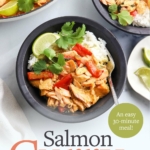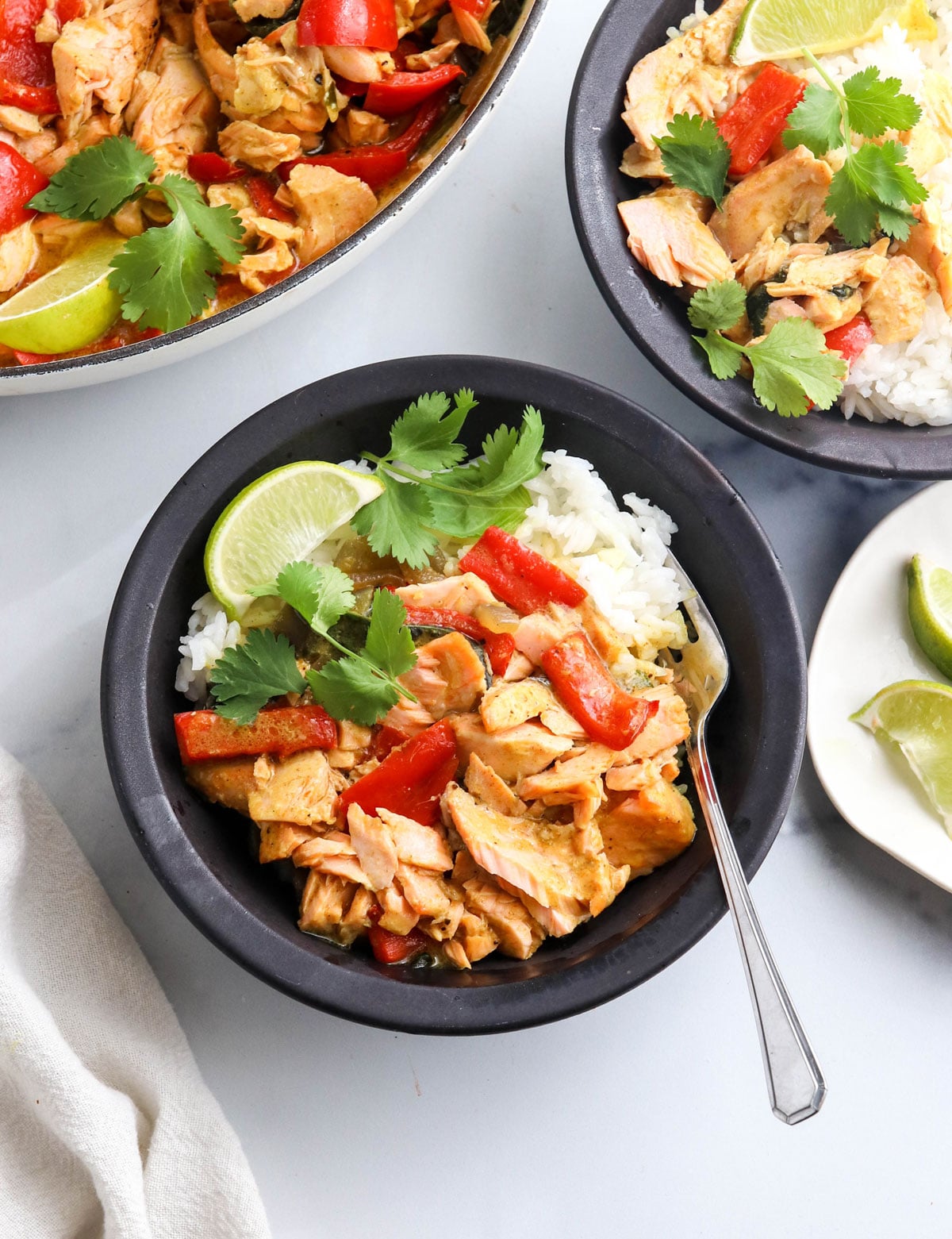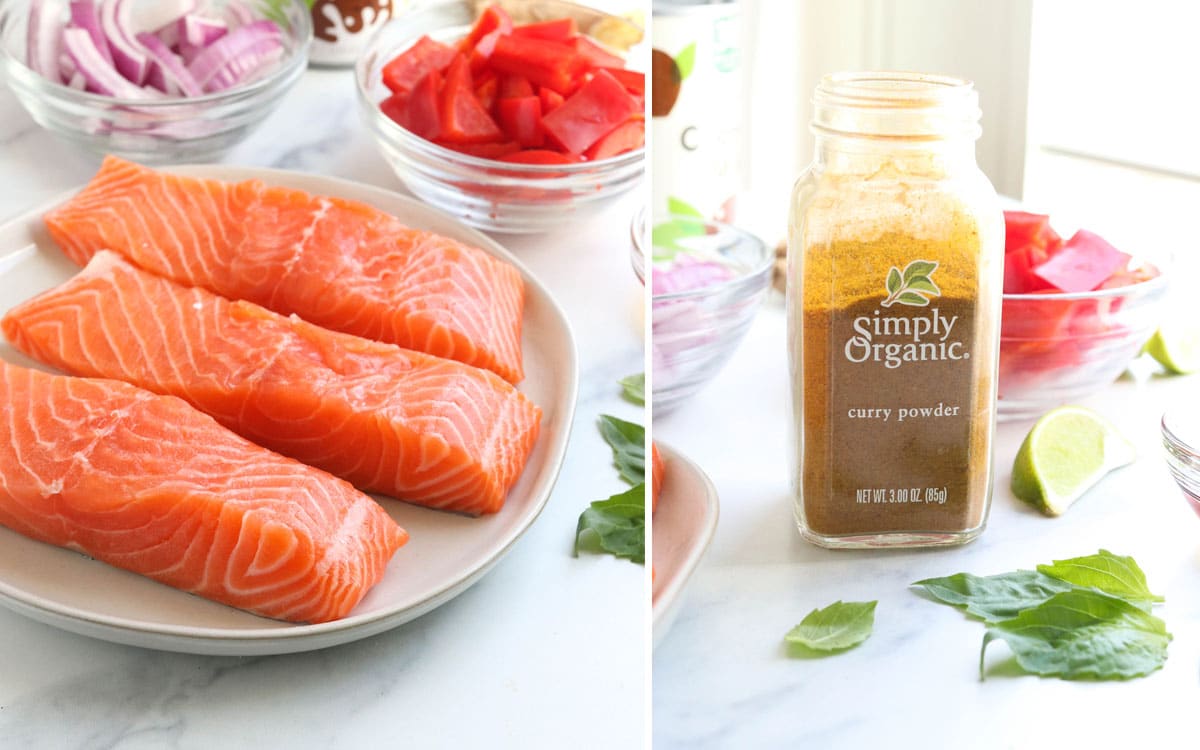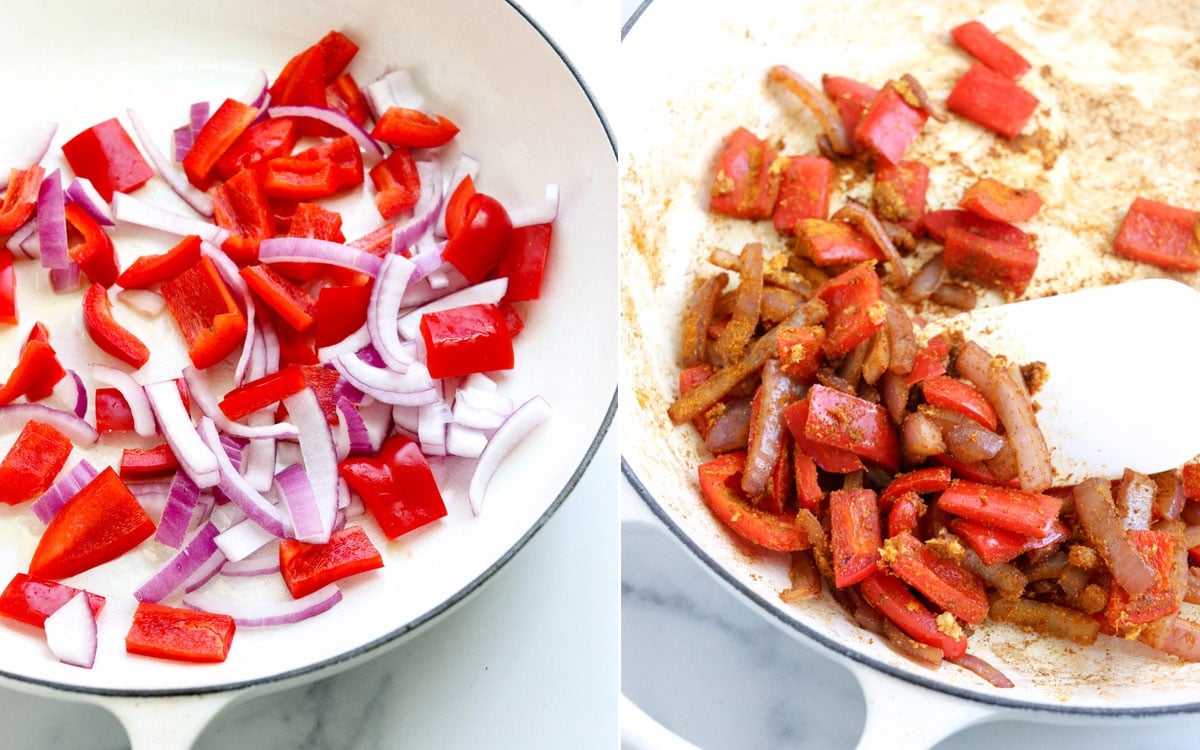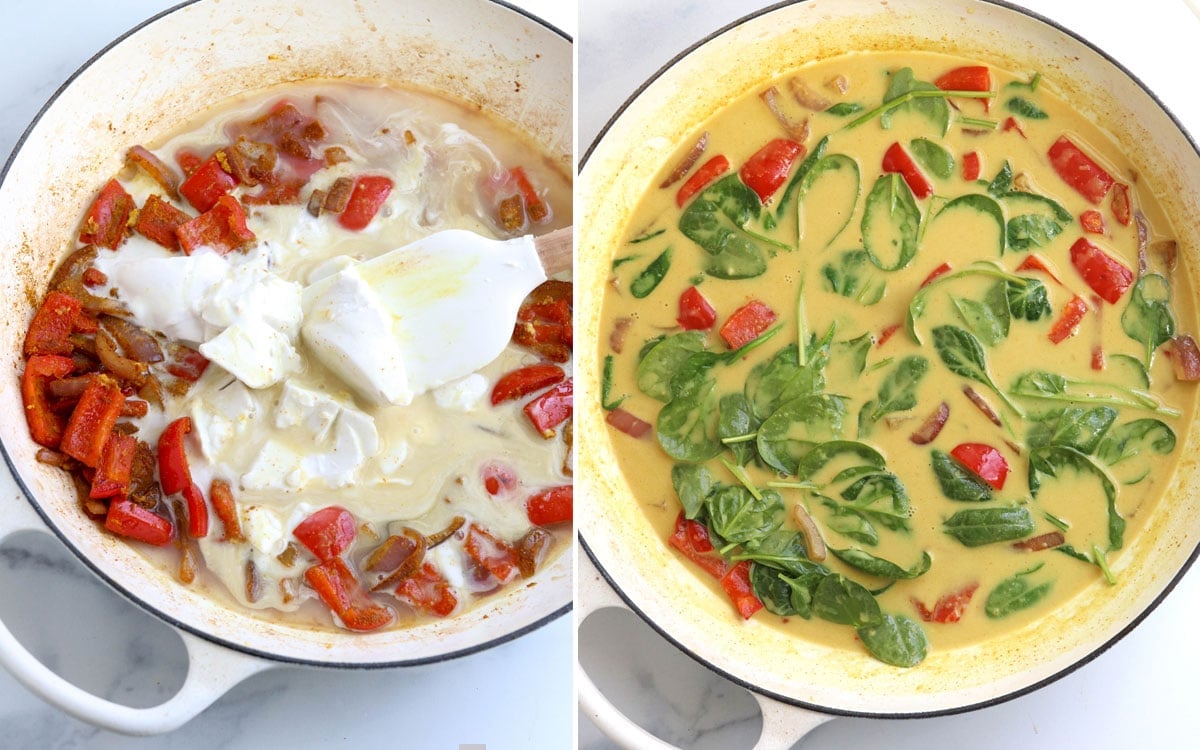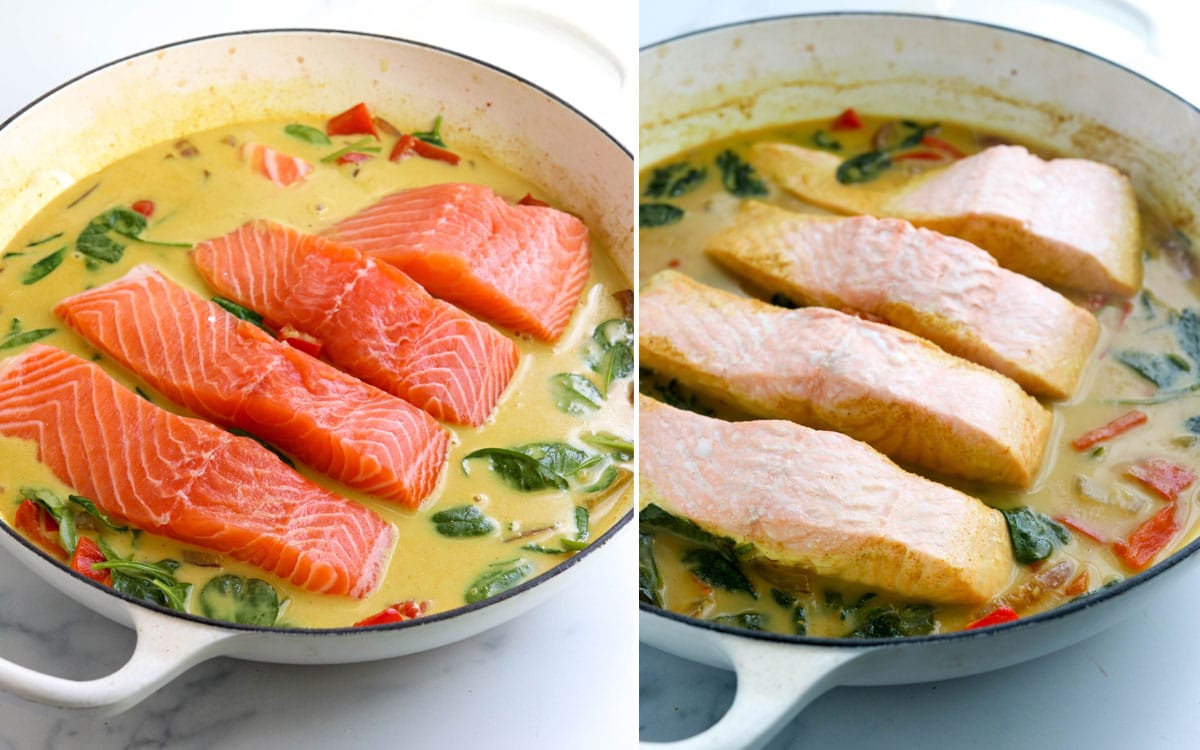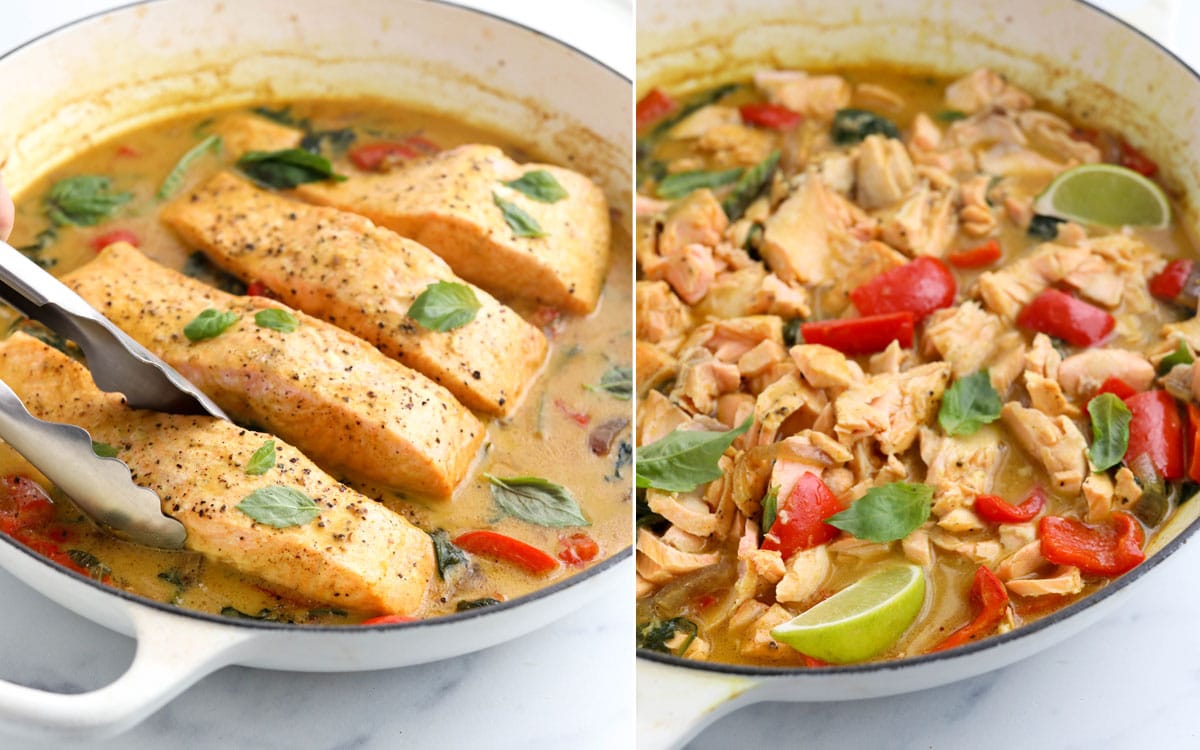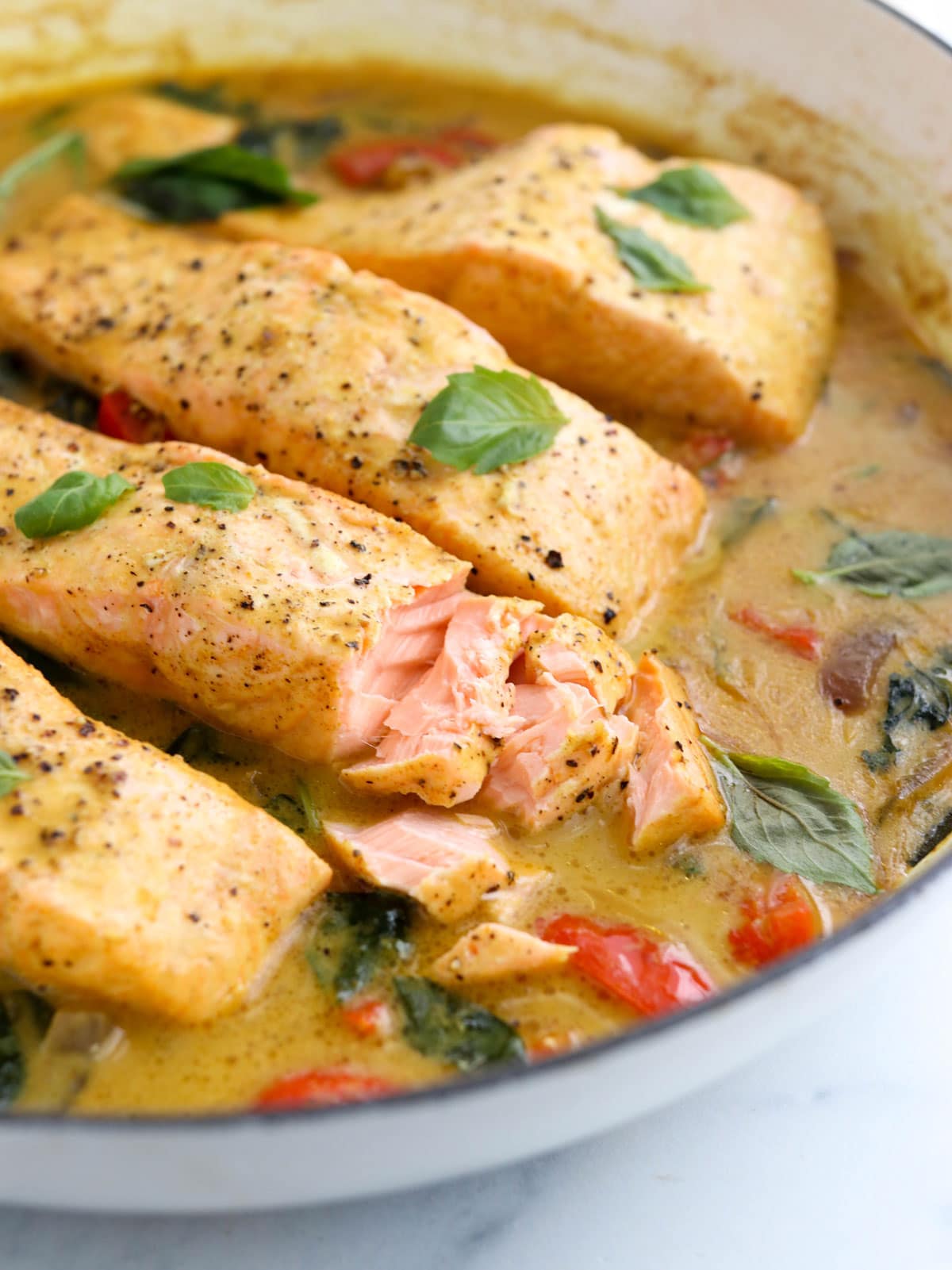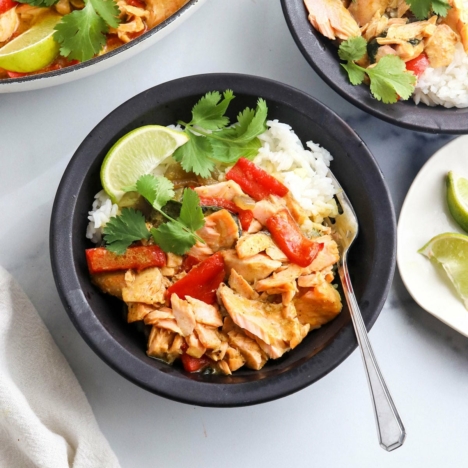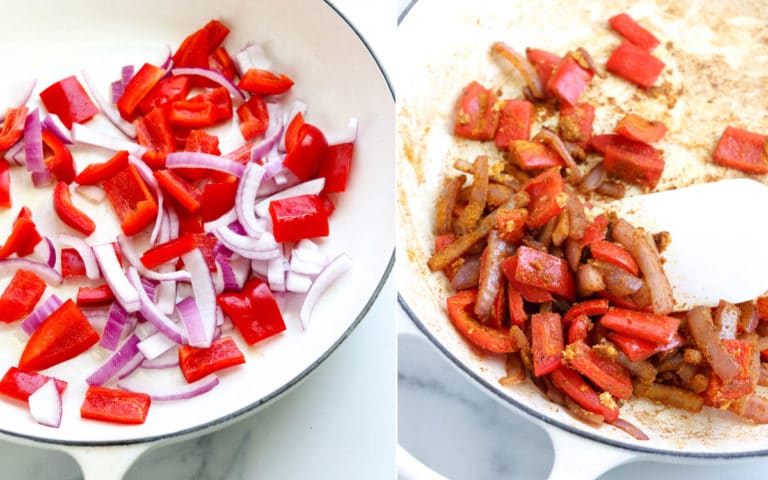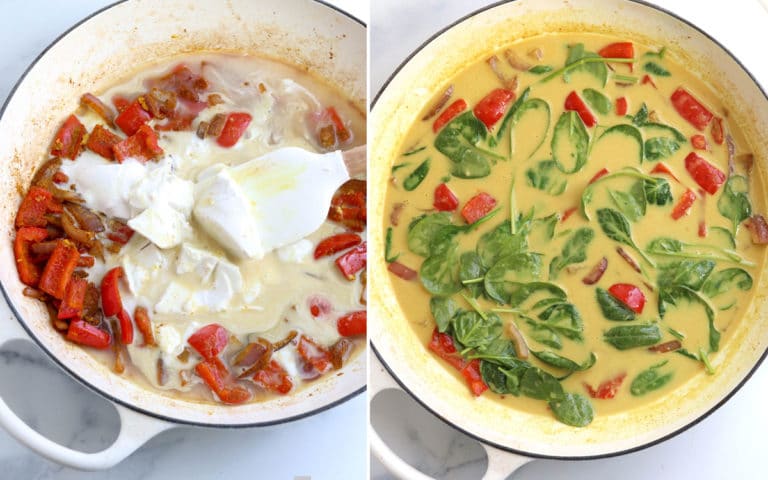Why You’ll Love It
What I love about this Salmon Curry recipe is that it’s incredibly flexible. You can use any type of fish you have on hand, including fresh, frozen, or even canned salmon. In fact, this easy curry sauce will go well with practically any protein you have on hand. This recipe cooks quickly on the stove, and if you want to cook a batch of rice in the Instant Pot at the same time, your meal will come together almost effortlessly. Or, try serving it with cauliflower rice, for a properly combined meal.
Ingredients You’ll Need
To make this Salmon Curry, you’ll need just a handful of simple pantry ingredients. You may already have them on hand! Here’s what you’ll need:
Coconut milk (I always use full-fat) Curry powder (or curry paste) Lime juice Maple syrup (optional) Any veggies you like!
This recipe is super-flexible, so you can use fresh, frozen, or canned salmon. The flavorful curry sauce makes any option taste delicious.
How to Make It
To get started, you’ll make the sauce. Start by sautéing the onion and bell pepper, to help them soften up. After 5 minutes, you can stir in the garlic, ginger, and curry powder.
Pour in the whole can of coconut milk next. (It’s okay if there are solid parts mixed in– they will liquefy as the coconut milk heats up in the pan.) I also like to add in a 1/2 cup of water to thin out the sauce, but that’s optional. Bring the coconut milk to a simmer, season with salt, and add in any leafy greens you might want, like spinach, kale or arugula. They will wilt quickly, so I usually add the greens right before adding in the salmon.
Tips for Cooking Salmon
Let’s briefly talk about cooking salmon. I always cook fresh salmon with the skin on, because I think it’s a pain to remove the skin while the fish is still raw. It flakes right off the skin after it’s cooked!
So, I cook the whole fish (skin and all) directly in the curry sauce. Once the fish is cooked, and looks opaque and flakes easily with a fork, I’ll use tongs to remove the salmon, and peel off the skin with a fork. Sometimes the fish will flake directly into the curry sauce as I pick it up with the tongs, and that works, too. The point is, the skin will easily separate from the cooked fish, and then you can remove the skin before serving.
If you’re using frozen salmon, I recommend thawing it before cooking it in this curry sauce. I haven’t tried cooking a frozen-solid salmon filet in this sauce, but I imagine it could work if you don’t have thawed salmon on hand. (Or try thawing frozen salmon in the air fryer first!) When using canned salmon, you won’t need to cook this dish as long, since the salmon is already cooked. I’d simmer it in the sauce for at least 5 minutes, to let the flavors meld, and then it’s ready to serve.
Substitutions
As I mentioned above, this recipe is very flexible, so you can use almost anything you have on hand. If you don’t have full-fat coconut milk, you can use light coconut milk, or even refrigerated coconut milk from the store, for a lower-fat and less-creamy curry sauce. If you don’t have fresh garlic and ginger, you can start by using 1/4 teaspoon each of the dried spices, if you have those on hand. I love ginger, so I’d probably add at least 1/2 teaspoon here, but it’s always best to start with less, and add more as needed. If you don’t have a curry powder blend at home, you can make your own curry powder, too. Or, try a store-bought curry paste! In that case, you’ll just need to double or triple the amount (try using 2 to 3 tablespoons) to get a similar flavor.
If you try this Salmon Curry, please leave a comment below letting me know how you like it. And if you make any modifications, I’d love to hear about those, too. – Reader Feedback: What’s your favorite way to serve fish?
